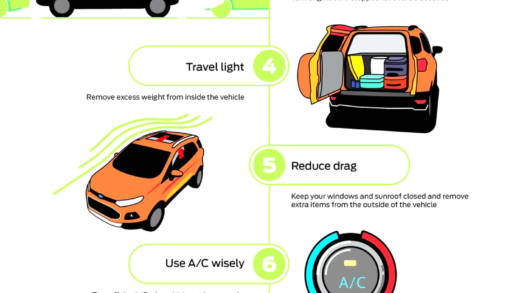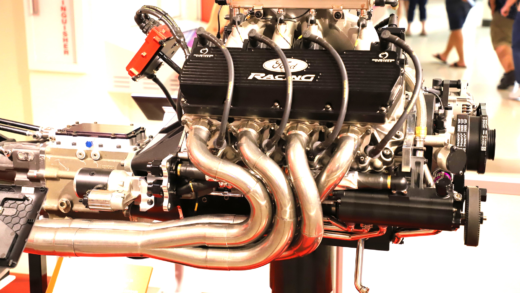Hypermiling combines efficient driving techniques with essential vehicle maintenance to enhance fuel economy. It emphasizes safe practices, legal considerations, and common mistakes to avoid. Regular maintenance and adherence to traffic laws are crucial for successful hypermiling.
Understanding Hypermiling: What Is It and Why It Matters?
Hypermiling is a set of techniques aimed at improving fuel efficiency while driving. It’s not just about squeezing extra miles out of a tank; it’s about smart driving habits. Why does it matter? Well, with rising fuel prices and growing environmental concerns, many drivers are looking for ways to save money and reduce their carbon footprint.
However, it’s essential to approach hypermiling with caution. Some methods can be dangerous, such as coasting or aggressive driving to reduce fuel consumption. This is where the need for understanding safe hypermiling techniques comes into play. Knowing the balance between saving fuel and ensuring safety is crucial for every driver.
Safe Hypermiling Techniques: Key Principles to Follow
When it comes to safe hypermiling, there are several key principles to keep in mind:
- Maintain a Steady Speed: Use cruise control on highways to avoid speed fluctuations.
- Gentle Acceleration: Gradually accelerate to your desired speed instead of flooring the gas pedal.
- Anticipate Stops: Look ahead and coast to stops when possible instead of braking hard.
- Reduce Weight: Remove unnecessary items from your vehicle to improve fuel efficiency.
- Optimize Tire Pressure: Keeping tires properly inflated can enhance fuel economy.
These techniques not only help in maximizing fuel efficiency but also contribute to safer driving. Always remember that safety should be the priority when applying hypermiling techniques.
Improving Fuel Efficiency: Tips Without Sacrificing Safety
Improving fuel efficiency can be achieved without compromising safety. Here are some practical tips:
- Plan Your Trips: Combine errands to reduce unnecessary driving.
- Use Air Conditioning Wisely: Avoid using AC at low speeds, but use it for highway driving.
- Drive Smoothly: Avoid rapid acceleration and hard braking.
- Limit Idling: Turn off your engine if you expect to be stopped for more than a minute.
- Choose Fuel-Efficient Routes: Use navigation apps to find the most efficient paths.
Implementing these tips helps in enhancing fuel efficiency while ensuring your safety and that of others on the road.
Driving Habits for Safe Hypermiling: Essential Practices
Hypermiling isn’t just about saving fuel; it’s about adopting driving habits that enhance safety and efficiency. Here are some key habits to integrate into your driving routine:
- Keep a Safe Following Distance: Maintaining a safe distance from the vehicle ahead allows for smoother driving and helps avoid sudden stops.
- Use the Brake Sparingly: Coasting to slow down instead of braking hard not only saves fuel but also reduces wear on your brakes.
- Limit Aggressive Maneuvers: Quick lane changes and aggressive turns can lead to higher fuel consumption and increase risk.
- Utilize Engine Braking: When going downhill, take your foot off the accelerator and let the engine slow the car down instead of using the brakes.
- Observe Speed Limits: Driving at or below speed limits not only improves fuel efficiency but also ensures you comply with legal requirements.
Incorporating these habits can significantly contribute to safe hypermiling while enhancing your overall driving experience.
Tools and Apps for Practicing Safe Hypermiling
To make hypermiling easier and more effective, various tools and apps are available. These resources can help you track your progress and optimize your driving:
- Hypermiling Apps: Apps like “Fuelly” and “GasBuddy” allow you to log fuel purchases and monitor fuel efficiency over time.
- Navigation Tools: Google Maps and Waze can suggest the most fuel-efficient routes, avoiding traffic and reducing travel time.
- OBD-II Scanners: Devices like “BlueDriver” connect to your car’s computer, providing real-time data on fuel efficiency and engine performance.
- Eco-Driving Programs: Many car manufacturers offer training programs or apps that provide tips on how to drive more efficiently.
- Fuel Efficiency Calculators: Online calculators can help you estimate your fuel savings based on different driving habits.
Using these tools can streamline your efforts in achieving safe hypermiling and improving your fuel efficiency.
Common Mistakes in Hypermiling: What to Avoid
While hypermiling can lead to significant fuel savings, certain mistakes can undermine your efforts and compromise safety. Here are some common pitfalls:
- Drafting Behind Other Vehicles: This risky practice can lead to accidents and is not advisable for safety reasons.
- Excessive Coasting: While coasting can save fuel, doing it too often or at inappropriate times can be dangerous.
- Ignoring Traffic Rules: Hypermiling should never come at the expense of obeying traffic laws, which are designed for safety.
- Overinflating Tires: While proper tire pressure is essential, overinflation can lead to blowouts and reduced traction.
- Neglecting Vehicle Maintenance: Regular maintenance is crucial. Poorly maintained vehicles can negate the benefits of hypermiling.
Avoiding these mistakes is key to successfully practicing hypermiling and ensuring a safe driving experience.
Hypermiling and Vehicle Maintenance: What You Should Know
Hypermiling is not just about clever driving techniques; it also involves understanding how vehicle maintenance plays a crucial role in achieving optimal fuel efficiency. Regular vehicle maintenance can significantly impact your fuel consumption and overall performance. Here are several key maintenance tips to consider:
- Regular Oil Changes: Using the correct grade of motor oil can improve your fuel economy. Dirty oil can lead to engine inefficiency, so change it as recommended by your vehicle’s manufacturer.
- Air Filter Replacement: A clean air filter allows for better airflow to the engine, enhancing combustion and fuel efficiency. Check and replace your air filter regularly.
- Spark Plug Maintenance: Worn or dirty spark plugs can cause misfires, leading to increased fuel consumption. Regularly inspect and replace spark plugs as necessary.
- Brake Inspection: Ensure your brakes are not dragging, as this can increase fuel consumption. Regular brake checks will help maintain efficiency and safety.
- Tire Maintenance: Properly inflated tires reduce rolling resistance, improving fuel efficiency. Check tire pressure monthly and rotate your tires regularly.
Incorporating these maintenance practices will not only enhance your hypermiling efforts but also prolong the life of your vehicle. Remember, a well-maintained vehicle runs more efficiently, saving you money on fuel in the long run.
Legal Considerations for Hypermiling: What Are the Rules?
When engaging in hypermiling, it’s essential to be aware of the legal considerations that come into play. While many techniques are perfectly legal, some can lead to legal issues or unsafe driving conditions. Here are a few key points to keep in mind:
- Obey Traffic Laws: Always adhere to speed limits and traffic signals. Some hypermiling techniques, like coasting or drafting, can tempt drivers to break the law, which could result in fines or accidents.
- Check Local Regulations: Different states or countries may have specific laws regarding fuel efficiency practices. Ensure that your driving habits comply with local regulations.
- Avoid Dangerous Practices: Techniques such as excessive coasting or aggressive maneuvers can not only be illegal but also pose a danger to you and other road users.
- Insurance Implications: Engaging in risky driving behaviors can affect your insurance coverage. If an accident occurs while hypermiling in a questionable manner, your insurer may not cover the damages.
- Vehicle Modifications: Some modifications to improve fuel efficiency might not be legal. Always check the legality of any changes you make to your vehicle.
Understanding these legal aspects of hypermiling is vital to ensure that your efforts to save fuel do not lead to legal troubles. Stay informed and drive safely.





Comments are closed.